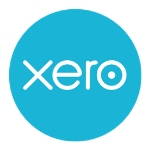Capital Cost Allowance and Rental Properties
What Are The Capital Cost Allowance Deductions?
As a landlord, you may be able to deduct the capital cost of improvements to your rental property from your income taxes. This is known as the “capital cost allowance” (CCA).
The CCA allows you to write off a portion of the cost of certain capital improvements to your rental property over time. The different types of CCA include; depreciation of buildings, depreciation of leasehold improvements, and depreciation of furniture and equipment.
The CCA is an important tax deduction for landlords because it allows you to recover the cost of capital improvements to your rental property over time. The CCA can also help you generate cash flow during the early years of your investment when rental income may be low.
How Does the CCA Work?
The CCA is a depreciation deduction that allows you to recover the cost of certain capital improvements to your rental property over time. The CCA is claimed on Form T776, which must be filed with your income tax return.
To claim the CCA, you must first determine the “adjusted cost base” (ACB) of your rental property. The ACB is the original cost of your property, plus the cost of any capital improvements that have been made to the property.
The CCA is claimed on a “declining balance” basis, which means that the deduction is taken on the depreciation of the asset over time.
Limits on CCA
You can only deduct the CCA on capital improvements that are made to your rental property. You cannot deduct the cost of repairs or maintenance.
The CCA is also subject to a “half-year rule.” This rule stipulates that you can only claim the CCA on capital improvements that are made in the first half of the year.
For example, if you make a capital improvement to your rental property on July 1st, you can only claim the CCA on half of the cost of the improvement.
If you have any questions about Capital Cost Allowance and Rental Properties call BBS Accounting CPA today!








